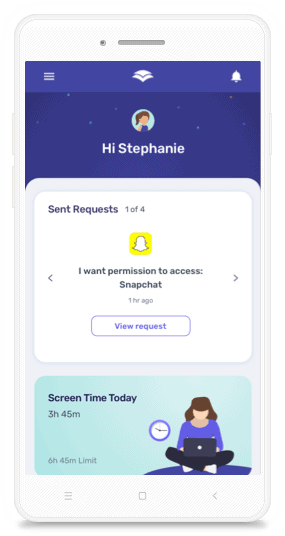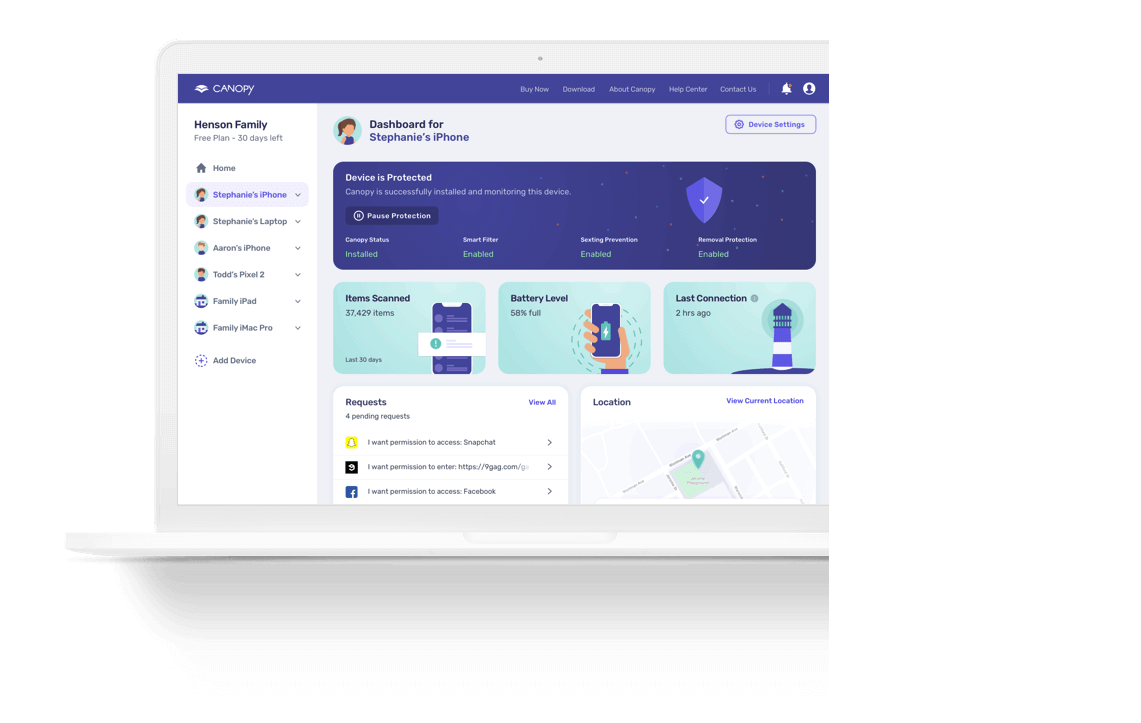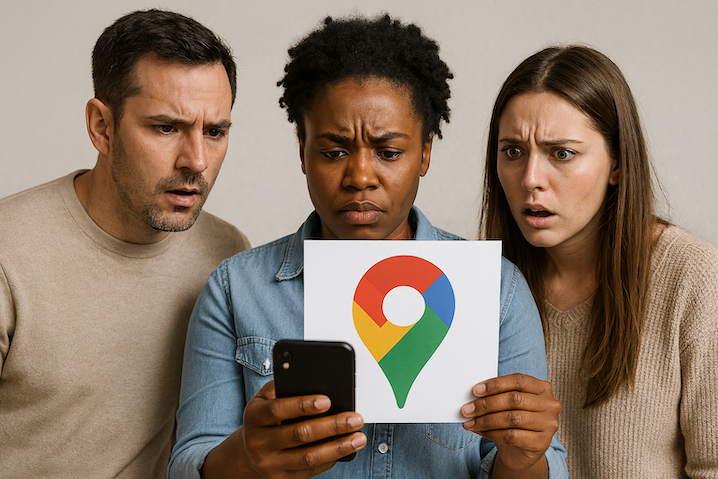If you’re comparing Canopy vs Qustodio, you’re actually choosing between two fundamentally different philosophies of digital safety for your family. It’s a choice that will shape your child’s online experience and sense of autonomy, as well as your own peace of mind.
Qustodio is built primarily for monitoring. It’s the digital equivalent of a private investigator, providing you with detailed activity logs, app usage reports, and (on supported platforms) in-depth oversight into calls and SMS, all flagged by AI-driven alerts.
Canopy, on the other hand, focuses on proactive protection – it’s more like a smart seatbelt, using real-time, computer-vision filtering (also AI-driven) to remove explicit images and videos before your child ever sees them, complemented by powerful sexting-alert tools.
That core difference – surveillance versus proactive safety – should drive your decision far more than any single checklist of features. One turns you into the household’s chief data analyst; the other aims to make the internet safer by default, reducing (although, of course, not eliminating) the need for oversight.
Quick Comparison Table: Canopy vs Qustodio
Category | Canopy | Qustodio |
Approach | Proactive filtering removes explicit images/videos before they appear. Focus on prevention and trust. | Monitoring-first: detailed reports, AI alerts, communications oversight. Focus on visibility and control. |
Content Filtering | AI-powered computer vision filters all websites and social media platforms; “whites out” explicit imagery in real-time. Backed up by website, app, and category blocking. | Category/URL filtering, Safe Search enforcement, AI alerts; no stated real-time, CV-based image removal. |
Sexting Tools | Detects explicit photos sent/received; can block transfer or require parent approval before viewing, depending on the device. | Calls/SMS monitoring & social platform alerts on supported platforms to flag risky conversations after the fact. |
Screen Time | Downtime schedules, daily limits; keeps controls simple and effective to reduce friction. | Strong, granular schedules, daily limits, “pause internet” functionality, and customizable routines. |
Activity Reports | Focused, safety-centric alerts and summaries. | Deep, detailed timeline of all activity, usage analytics, social media updates, and AI-driven notifications. |
Supported OS | iOS, Android, Windows, macOS, Chromebook, Kindle | |
Removal/Tamper | Strong anti-tamper “Removal Prevention” on both mobile & desktop platforms. | Standard uninstall protections, which can be bypassed by tech-savvy kids. |
Pricing (typical) | Device-based plans with a free trial. | Free tier for one device + paid Basic/Complete annual plans for more features and devices. |
Best Fit | Families who want to reduce exposure and have fewer daily fights over technology. | Families who want maximum visibility into their child’s digital life and feel the need for granular control. |
What are your online safety goals?
The digital world your child inhabits today is an algorithmic firehose, TikTok, YouTube Shorts, Instagram Reels, and even AI-driven search, so parents need smart parental control apps and clear guardrails.
Content from TikTok, YouTube Shorts, Instagram Reels, and even AI-driven search results is designed to be consumed rapidly and without friction. Parenting thought leaders and child-safety advocates urge families to set guardrails, from internet safety tips for parents to device-level filters that actually stick.
Parenting thought leaders and child safety advocates continue to sound the alarm, urging families to establish digital guardrails that minimize harm while preserving trust.
This framing is critical. Are you trying to reduce your child’s exposure to harmful material, or are you trying to observe and record their behavior to react to it later?
If prevention’s your goal, start with iOS parental controls plus real-time filtering rather than dashboard surveillance. The first approach, prevention, aims to create a safer environment where kids can explore more freely. The second observation can provide valuable insights, but also risks turning parents into wardens, eroding the very trust needed for open conversations.
In practice, this choice affects how much time you spend scrolling through dashboards, how often you end up negotiating access to a “blocked” site, and whether your child sees you as an ally or an adversary in their digital life.
Overview of Qustodio: The All-Seeing Eye
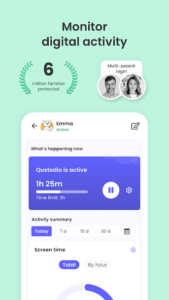
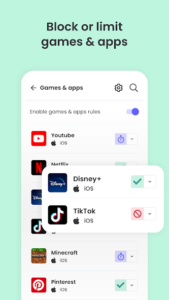
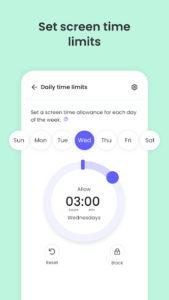
Qustodio is a mature, feature-rich, cross-platform suite that excels at comprehensive activity monitoring. Think of it as a flight data recorder for your child’s digital life. You get detailed timelines of web history, weekly/daily email reports, app-usage stats, and category/URL filtering – classic Windows 10 parental controls and cross-platform guardrails.
Recent versions add AI message alerts for risky conversations, useful if you’re focused on text monitoring and social signals. For some families, especially those dealing with high-risk situations, this is the entire value proposition: lots of visibility, lots of controls, and lots of alerts.
For some families, especially those dealing with high-risk situations, this is the entire value proposition: lots of visibility, lots of controls, and lots of alerts.
- Communications Oversight: On Android, Qustodio’s “calls & messages” monitoring is powerful, showing you contacts, SMS content, and even allowing you to block calls from specific numbers.
On iOS, due to Apple’s platform restrictions, achieving this requires a more complex workflow that requires a Mac or Windows computer, and the results are more limited than on Android. If your primary goal is maximum communications logging, the experience is undeniably strongest on Android. - Where Qustodio Feels Heavy: This model is surveillance-oriented by design. It’s a fundamental part of its DNA. The surveillance-oriented model means constantly collecting and reviewing data, which can raise friction; consider balancing with why parents should limit screen time guidance and open dialogue.
You will likely get more alerts to triage, spend more time in the parent dashboard, and may find yourself in conversations that begin with “I saw that you…” – a phrase that can put teens on the defensive. While some families value this level of audit, others find it intrusive, a significant time sink, or a catalyst for conflict.
Overview of Canopy: The Smart Filter
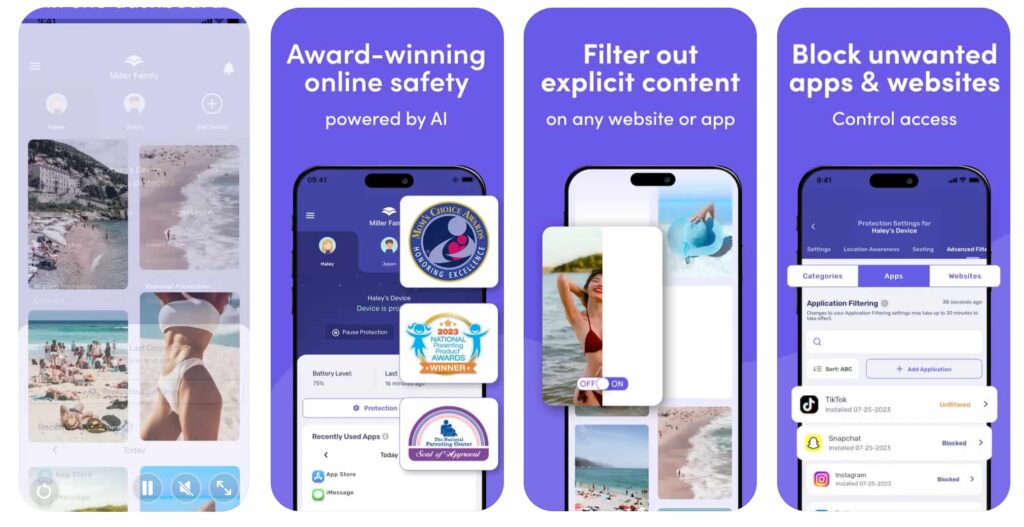
Canopy parental control app is built around a different premise: preventing harm is better than documenting it. Its standout feature is its real-time, computer-vision filtering engine. Its standout feature is its real-time, computer-vision filtering engine. As a webpage or app feed loads, Canopy’s AI analyzes images and videos on the fly.
If it detects nudity or pornography, it instantly “whites out” or blurs the explicit visual, leaving the rest of the page accessible. This surgical approach means your child can still use sites like Reddit for a school project or YouTube for a tutorial without being ambushed by inappropriate thumbnails or embedded images.
Canopy also includes powerful Sexting Alerts that can automatically detect and intercept sexually explicit photos (depending on the device), prompting a parent for a decision before the image is even viewed. This is complemented by the expected toolkit of screen-time limits, app blocking, location alerts, and robust, anti-tamper Removal Prevention on both mobile and desktop.
- Why This Matters More Than Ever:
- The modern internet mixes safe and unsafe content on the exact same platforms. Domain/category blocklists are blunt: you either overblock (e.g., all YouTube) or miss harmful visuals; Canopy separates good from bad, see how to block YouTube on iPhone or how to block YouTube on iPad without nuking the whole app.
It either overblocks – banning all of YouTube or Reddit and causing endless arguments – or it misses the harmful visuals embedded within otherwise-allowed feeds. Canopy’s filtering is designed to separate the bad from the good, a practical and essential approach for a world where homework, hobbies, and high-risk content live just a scroll away from each other.
Content Filtering Deep-Dive: Prevention vs. Reaction
If your number one goal is “I don’t want my child to see sexual content,” this is the most important section of the review.
- Canopy: Surgical, Real-Time Prevention Canopy uses sophisticated AI and computer vision to analyze visual content in milliseconds. It doesn’t just rely on a list of “bad websites.” It understands what’s in an image or video. This means it can:
- Block Pornography on Any Site: Works even on new domains or via browsers where you’d otherwise rely on how to block adult content on Chrome. It can identify and block a pornographic image even if it appears on a brand-new website or a typically safe platform like an online encyclopedia.
- Make Social Media Safer: pairs well with TikTok parental controls, Instagram parental controls, and Snapchat parental controls. It works inside the browser versions of all social media platforms, blurring out explicit images that might appear in a feed or direct message.
- Reduce Fights: Whites out only offending content; Enhanced mode targets suggestive imagery (e.g., lingerie), similar to tightening blocking a website on Safari. By “whiting out” only the offending content, it prevents the classic “Why is the whole site blocked? I need it for school!” argument. Canopy also offers an “Enhanced” protection level that targets suggestive, minimal-clothing imagery (e.g., lingerie, revealing swimwear), giving families who want stricter defaults more control.
- Qustodio: Rules, Categories, and Alerts Qustodio uses a more traditional system of category blocking (e.g., block all “Adult Content” sites), Safe Search enforcement on search engines, and custom block/allow lists. Its AI alerts add another layer, notifying you if your child searches for or discusses risky topics. Its model is to block the source (the domain) or alert you to the behavior after it happens.
This is a reasonable approach when your goal is high-level control and detailed logs, but it’s far less effective for surgical filtering on mixed-content platforms where the danger isn’t the site itself, but specific content within it.
Bottom line: For proactive, real-time visual filtering that prevents exposure in the first place, Canopy is unequivocally the stronger and more modern solution. For site-level filtering supplemented by extensive reports and keyword-based alerts, Qustodio is the winner.
Screen-Time Management: Granularity vs. Simplicity
Both applications provide the essential tools to manage screen time: setting daily limits, creating downtime schedules for sleep or homework, and blocking specific apps. However, their philosophies diverge here as well.
- Qustodio goes for maximum granularity. You can create custom routines (e.g., “School Time” with only educational apps allowed, “Bedtime” where everything is off), use a “Pause Internet” button for the whole family, and fine-tune a growing set of automation toggles. If you enjoy dialing in settings and want to be the “air traffic controller” for your family’s device usage, Qustodio has a clear edge.
- Canopy deliberately keeps things simpler: core time limits + strong filtering – great if you’d rather detox a child from screen time than micromanage. It provides the core controls that solve the biggest problems – getting kids off their devices at night and limiting overall time on distracting apps – without turning the parent into a full-time IT administrator. The philosophy here is that screen time rules should be a framework for conversation, not a complex web of permissions. Pairing Canopy’s powerful filtering with its straightforward time limits is a sweet spot for many families who want protection without the administrative burden.
Also, remember that both Apple’s Screen Time and Google’s Family Link have become increasingly capable. Using their free, built-in controls for basic scheduling alongside a dedicated app for advanced filtering is a powerful strategy.
App & Web Activity Monitoring: The Trust vs. Transparency Dilemma
This is where the philosophical divide is sharpest.
- Qustodio is Deeper by Design: If you want to know where your child has been online, for how long, and (on supported platforms) what they said, Qustodio is built for precisely that.
You receive a detailed activity timeline, usage graphs, and AI-powered alerts across web searches, YouTube views, SMS messages, and some social apps. This deep visibility can empower parents to have evidence-based conversations about specific behaviors or concerns.
- Canopy is Privacy-Forward by Design: Canopy takes a more minimalist and privacy-preserving approach. Instead of generating surveillance-style logs of every action, it focuses on safety-centric alerts that matter most (e.g., “An attempt to send a sexting photo was detected,” or “An explicit image was blocked on this website”).
For parents who want to trust their kids but verify that they are safe from the worst content – without creating a dossier of their private conversations – this is a feature, not a limitation. It respects the child’s privacy while still providing the crucial safety net.
Ease of Use: “Set-and-Protect” (Canopy) vs. “Tune-and-Audit” (Qustodio)
Parents describe Canopy as “set-and-protect”: install, choose protection level, add a few rules, done – no endless approvals like how to block app store on iPhone workarounds.
Because its filtering is surgical, you spend far less time being a gatekeeper, approving and denying requests for sites that were blocked unnecessarily. The typical workflow is: install, set the protection level, add a few basic time rules, and then let it do its job in the background. Its non-intrusive nature means you have more peace of mind with less daily effort.
Qustodio, while not difficult to use, invites constant tinkering and review. Its value is in the data it provides, which means you need to spend time in the app – reading reports, analyzing timelines, and triaging alerts. This can be valuable for some families, but it adds to the mental load of parenting for others. The setup process, especially for communications oversight on iOS, is also notably more complex.
Supported Devices & Setup
- Qustodio: covers iOS, Android, Windows, macOS, Chromebook, and Kindle, handy if you also need to block apps on Android or Amazon devices. This can be a deciding factor for families with younger kids who use Amazon devices for reading. Platform capabilities differ significantly, especially for calls/SMS oversight: Android offers the richest feature set, while iOS monitoring is more limited and complex to enable.
- Canopy: Canopy supports iOS, Android, Windows, macOS, and Chromebook, with strong Removal Prevention, and pairs with blocking YouTube from Safari. Features are tailored to each platform’s capabilities. A key differentiator is its robust Removal Prevention, which makes it much harder for a determined tween or teen to disable or uninstall the protection, a common weak point in other apps.
Pro tip: With either app, it’s wise to also use the free, built-in controls from Apple (Screen Time) or Google (Family Link) to lock down system-level settings, like preventing App Store changes, profile installation, and setting content age ratings.
Pricing & Plans (as of 2025)
- Qustodio offers a limited Free plan for a single device, which is a great way to test its basic functionality. Its paid Basic and Complete annual plans unlock the full suite of monitoring features, with pricing based on the number of devices. Qustodio frequently adds new features to its premium tiers.
- Canopy uses straightforward, device-based subscription plans, typically with a free trial to let you experience its unique filtering firsthand. The core value proposition is its real-time filtering and sexting alerts- advanced technology that many parents find is well worth the investment, even if its screen-time features are intentionally simpler than Qustodio’s.
Pricing changes frequently, so always check the companies’ official websites for the most current information before making a decision.
Real-World Scenarios: Who Should Choose What?
- For Elementary Schoolers: Their primary need is protection from accidental exposure, not surveillance. Choose Canopy for its best-in-class proactive filtering and pair it with simple time limits.
- For Tweens Getting Their First Phone: This is a crucial stage for building trust. Start with Canopy to make social media feeds and general browsing safer without making them feel spied on. Its Sexting Alerts provide a critical guardrail as they begin to navigate social messaging.
- For the “Good Kid” Who’s Just Curious: Protect curiosity without logging every message, use Canopy to block websites on a computer or phone. Most kids aren’t actively seeking out trouble but will stumble upon it. Canopy protects their curiosity by filtering out accidental exposures without logging every single search term, preserving their ability to learn and explore safely.
- For Teens with Specific Risks (Bullying, Self-Harm, Risky Contacts): This is where the choice gets nuanced. Start with Canopy to reduce harmful exposure. If you have specific, credible concerns and need deeper visibility into their communications – especially on Android – a targeted, short-term trial of Qustodio might be warranted. This should be a deliberate intervention, not a default state of surveillance.
- For Mixed OS Households (iOS + Android + Kindle): If Kindle coverage is non-negotiable and you need deep logging for an Android device, Qustodio might be the most practical pick. However, if your top priority is consistent, best-in-class visual filtering across all devices (including iOS, Android, and desktops), Canopy remains the most compelling choice.
- For Privacy-Sensitive Families: The choice is clear. Choose Canopy. You minimize the collection of sensitive data while preventing the worst content from ever reaching your child’s screen.
Final Recommendation
- Pick Qustodio if your parenting philosophy requires surveillance-style visibility. You want deep activity logs, AI-driven alerts on your child’s communications, and granular, complex screen time routines. You are prepared to invest the time to manage the system and have the necessary conversations that this level of monitoring entails. The experience is most powerful on Android.
- Pick Canopy if your priority is to proactively prevent exposure to harmful sexual content across the modern internet. You value a solution that works intelligently in the background, reduces daily arguments over technology, and respects your child’s privacy while keeping them safe. You believe that building trust is as important as setting rules.
For most families, start with Canopy’s prevention-first model, then layer monitoring only if needed, meanwhile cover common hotspots with blocking Discord or blocking Google Maps as required. If, after implementing it, you still face specific, unresolved safety concerns, you can then consider layering on a more intensive monitoring tool for a short, purposeful period.
This sequence – prevention first, surveillance only when necessary – keeps trust and privacy as your foundation while ensuring you have the tools to meet your ultimate safety goals.

off
Canopy vs Qustodio FAQs
What’s the main difference between Canopy and Qustodio?
Canopy is built for proactive filtering (computer vision whites out explicit images/videos before kids see them). Qustodio is built for monitoring (reports, AI alerts, calls/SMS oversight on supported platforms).
Is Canopy better at blocking porn than Qustodio?
For on-screen exposure, yes. Canopy’s real-time filtering removes explicit visuals across websites and social media platforms; Qustodio relies on categories/URL rules and alerts, not image-level removal inside feeds.
Qustodio vs Canopy: which is more privacy-friendly?
Because Canopy prevents exposure without logging everything your child does, many families view it as more privacy-respecting. Qustodio’s strength (visibility) inherently involves more data collection.
Can I use Qustodio and Canopy together?
You can, but stacking multiple filters/agents can cause conflicts or battery drain. Most families pick one approach based on goals: limit exposure (Canopy) or log and analyze (Qustodio).
Does Qustodio offer better screen-time control than Canopy?
Qustodio has more granular routines and “pause internet.” Canopy covers essentials (Downtime, daily limits, app blocking) with a simpler philosophy.

